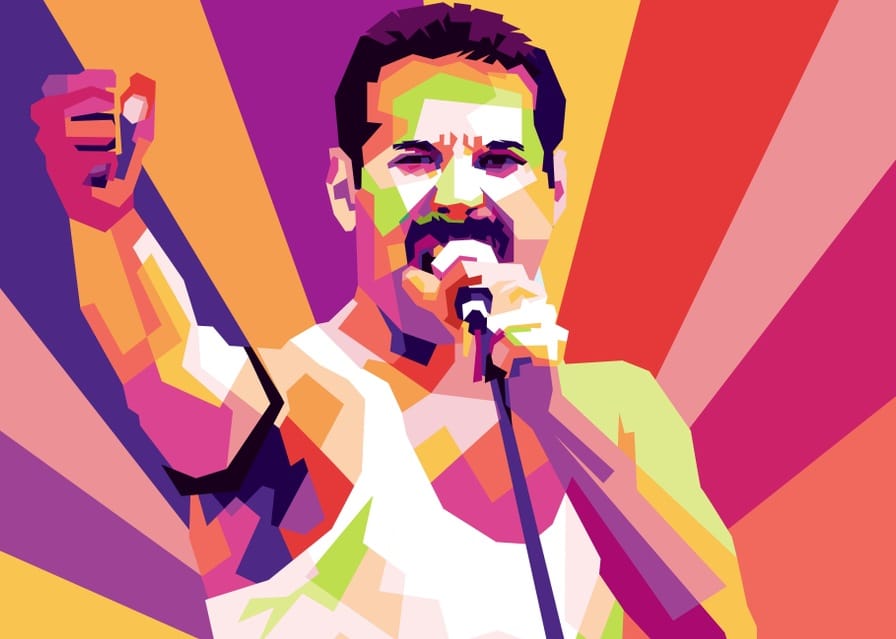
Far reach from rockstar superstardom to fundraising glory? Not really!
Watching Bohemian Rhapsody, I couldn’t help but notice a few standout truths and values from their rise to fame. They apply as much to hardworking fundraisers, dedicated to making the world a better place, as to anyone else reaching for success.
Lesson #1: Think big and bold.
“You’re just not thinking big enough, darling.” In one scene in the film, this is Freddie Mercury’s reply to his bandmates’ moaning about a packed concert schedule with meager returns. Traveling around the UK performing, their van has broken down en route to a gig. But Freddie wasn’t satisfied with just touring the UK by van. He wanted to conquer the world. He wanted to redefine music. His bold vision paid off.
What does it mean for fundraisers?
Nonprofits often get stuck in a scarcity mindset, defining programs based on currently available funds. It’s a vicious cycle. You can only work with what you have. But donors give because they want to solve problems.
Tell donors what it will take for your organization to solve your issue once and for all. What does success look like? What do you need in terms of staff and financial resources to make it happen? How much will it really cost to claim “mission accomplished”? Your vision and plan must be bigger than your organization. It should inspire your donors to join you in dreaming big, so they can see themselves in your solution. Big solutions almost always result in big gifts.
Lesson #2: Know your audience.
“Four misfits who shouldn’t fit together, but they do. And they’re playing to the other misfits at the back of the room.” That was Freddie’s pitch perfect response to Elton John’s manager who questioned their formula for success as he decided whether to sign them. They didn’t fit the mold of other rock bands that were dominating the charts at the time. They knew what made them unique and who their audience was — “misfits” like them looking to belong to each other.
What does this mean for fundraisers?
In telling your story, do you articulate your competitive advantage? The word “competition” feels like a pariah in the nonprofit sector, but in reality every charity shares space with others doing similar work. Donors want to give to the organization that will make the biggest difference, even if it means shopping around first. What it is about your organization that is best positioned to solve the problem you were created to address? How can you increase your advantage through collaboration and other partnerships?
As much as Queen knew their niche as a band, they also knew who their fans were. How much do you know about your donors or those in your audience? You can’t possibly know the unique story of every one of your donors, but having a sense of their personas, their interests, what drew them to you, and how they want to connect with you can help you tailor your communications and outreach strategy.
Lesson #3: Engagement creates the best donor experiences.
Close your eyes and think about these sounds: Stomp Stomp Clap. Stomp Stomp Clap. What comes to mind? Is it the opening beats of “We Will Rock You”? As the story goes, Brian May and Freddie wrote this song and its companion “We Are the Champions” after noticing how an audience broke into a spontaneous rendition of a classic football (soccer) anthem, “You’ll Never Walk Alone”, at the end of one of their live shows. At the time, fans didn’t often sing along with bands they went to see in concert. Queen wanted to create their own anthem to give back to their fans. To invite them to participate. They had achieved global success selling out stadiums everywhere they went. They didn’t want their concerts to be one-sided.
Those opening beats serve as a rallying cry for the audience to jump into the song. It’s simple, and anyone can do it. It worked. I know because I was at RFK Stadium for Live Aid. Those first few beats brought the crowds at Wembley and at RFK together in a resounding singular chorus connected with each other and with Queen 3,000 miles away. Even today, 30 years later, every time I hear that song, I’m drawn back to that incredible Live Aid performance.
What does this mean for fundraisers?
What’s your “Stomp Stomp Clap” call? How can your audience (donors and non-donors) feel part of and excited about your work? Creating connection can come in the form of site visits or VR tours, if it’s not possible to bring your audience in person. They can come from videos that share impact stories or personal conversations with your beneficiaries. They can come in the form of advocacy work or social media promotion and newsletters that profile and highlight all the ways your donors are heroes to you.
Big, bold vision.
Know yourself and your audience.
Engage and inspire your donors.
